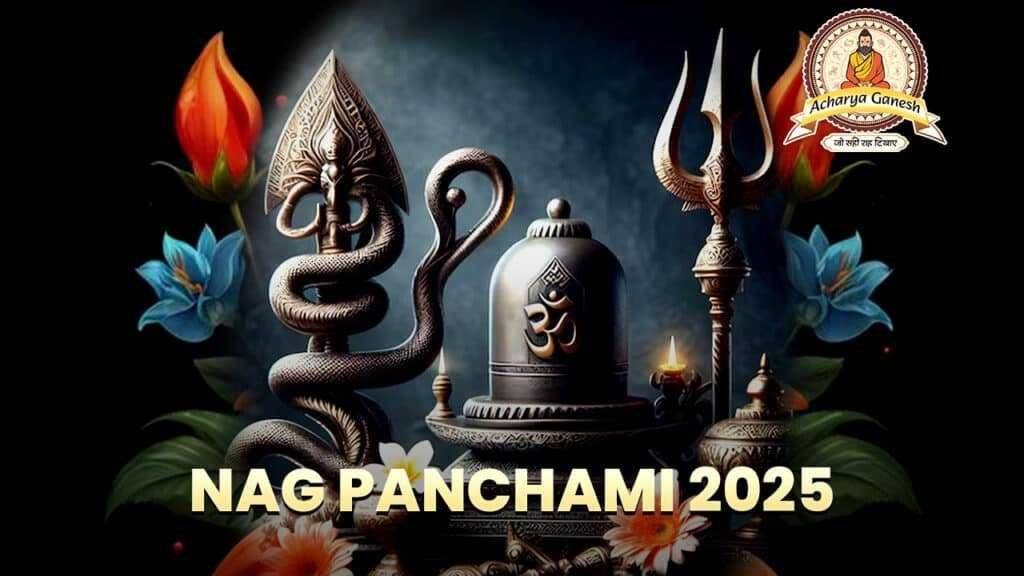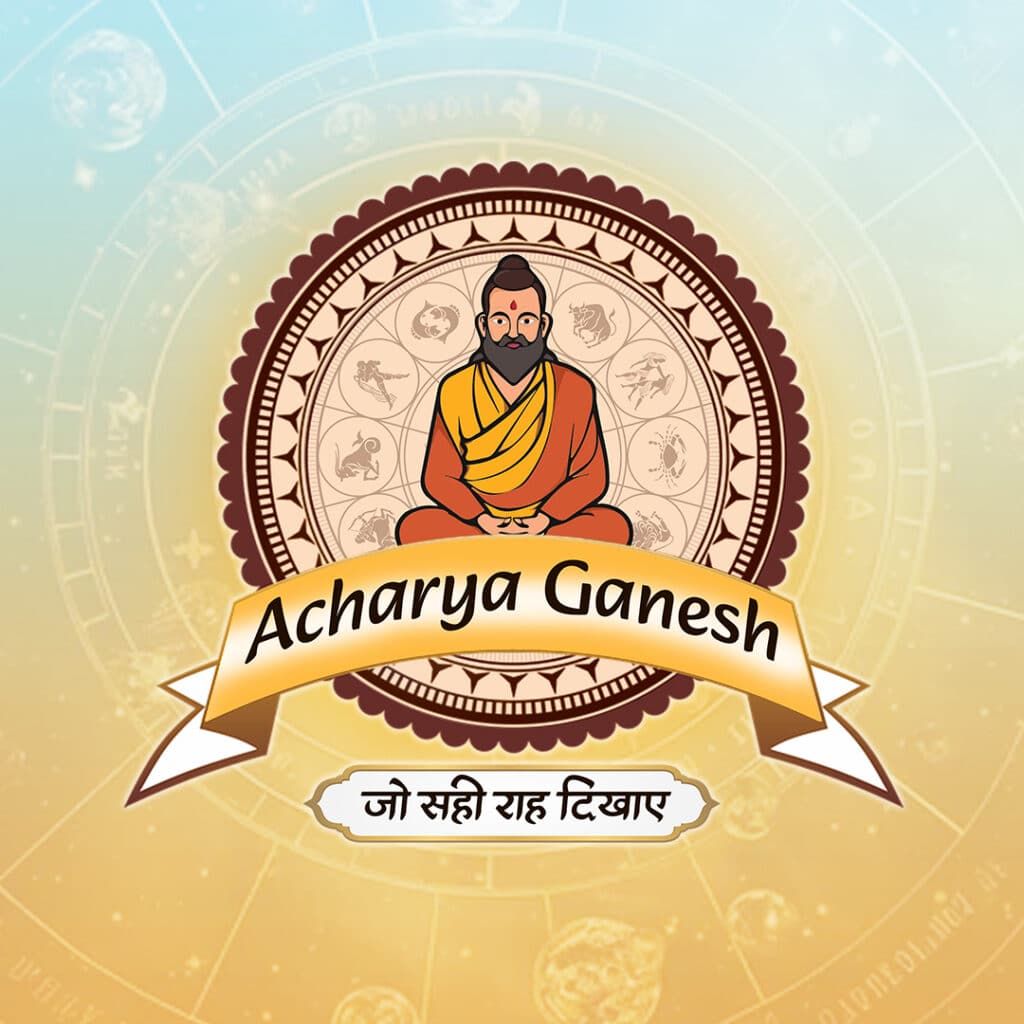Table of Contents
ToggleNag Panchami 2025:
The Nag Panchami festival is greatly celebrated by the people of India. On this day, worshiped the serpent god and Lord Shiva. This event is observed on the Panchami Tithi of the Shukla Paksha of Shravan month in the Hindu calendar, which likely falls in the English calendar in the months of July or August. Lord Shiva holds the month of Shravan in high regard. This event represents the bond between the serpent gods and Lord Shiva. On this day, women worship Nag Devta and give milk to snakes. Women offer prayers for their brothers’ and families’ well-being as well. Most of India, including Nepal, celebrate it, especially married women.
2025’s Nag Panchami Shubh Muhurat
On Shravan Shukla Panchami, the fifth day of Shukla Paksha in the Shravan month, Nag Panchami Vrat is observed. It is appropriate to observe the Vrat on Chaturthi if Panchami is dominant for fewer than three Muhurats on its day and Chaturthi is dominant for less than three Muhurats on the day before.
Additionally, it is thought that the vrat can be observed the day after if Chaturthi lasts for more than three muhurat and Panchami starts with the next day concluding after two muhurat. Panchami Tithi begins on July 28, 2025, at 11:25 a.m. and ends on July 29, 2025, at 10:40 a.m. Beginning at 05:56 AM and ending at 08:29 AM is the Nag Panchami Puja Muhurat. The mahurat lasts for 02 hours and 33 minutes.
The History of Naga Panchami
Hindu scriptures are the source of the celebration of Nag Panchami. The Nagas originated from Kashyap’s third wife. Kashyap is the son of the creator, Brahma. Thus, the gods, or Devatas, were the stepbrothers of the Nagas. They were the rulers of Patal Loka. The scriptures offer descriptions of eight great Nagas. Among them was the terrible Kaliya. Lord Vishnu’s incarnation, Krishna, vanquished Kaliya when he was just a young kid and danced on his head, ending his evil actions. On the day of Nag Panchami, Krishna vanquished Kaliya.
On the other hand, it is believed that the Nagas were a tribe that was a part of the Indus Valley civilization and that they revered snakes. The Nagas evolved into the Aryan people after their civilization was well established in India, and the Aryans accepted the Nag Panchami rites, which were relics of the Nagas’ customs. Nag Panchami is also observed by Nepalese Hindus.. According to folklore, the Kathmandu Valley was once a lake that was home to nagas, or snakes. The Nagas got angry when people tried to live here. They were therefore given unique residences with ritualistic importance and revered.
The importance of Nag Panchami
Considering their status as the land’s guardians, snakes keep harmful animals away from crops. Worshiping the snake god on Nag Panchami day, he seeks protection and releases one from dread. On Nag Panchami day, individuals who have Kaal Sarp Dosh in their horoscope can eliminate it by offering prayers to snakes. Worshipping the serpent god removes all impediments and brings prosperity and happiness. In Indian mythology, snakes take on various forms and serve as symbols for numerous deities. A common image of Lord Vishnu has him lying down on the serpent Ananta Sesha, king of snakes, like Ananta Sayana, with Ananta Sesha acting as his bed. Two snake worshiping deities are Lord Muruga and Lord Shiva, who both have serpents around their necks.
People refer to Lord Shiva as the serpent lord. Since Adisesha was the younger brother of Lord Rama (the seventh avatar of Lord Vishnu), Lord Shiva is also honored on this day in the Treta Yuga (second era). Adisesha assumed the form of Lord Balarama, the elder brother of Lord Krishna (the eighth incarnation of Lord Vishnu), during the Dwapara Yuga (third era).
The Naag Panchami legends:
The son of Parikshit and grandchild of Arjun, Janmajeya, had planned for a Nag Yagya to take revenge on the snakes by eliminating their whole clan. It is because Takshak the snake killed his father, Parikshit. Aastik Muni, the son of Rishi Jaratkaru, had put an end to this Yajna in order to protect Nagas. It was Shravan Shukla Panchami’s day to end the Yajna. He protects his clan and Takshak Snake. According to the legends, people celebrate Nag Panchami on that day.
Once, a large family was supposed to consist of seven brothers and one sister and they were all from a village. These were infants when their parents died in the unfortunate incident. Due to this the seven brothers were responsible for taking good care of their sister. Due to poverty, the brothers had to cultivate farmland and chop timber in the forests in order to obtain income. The sister would visit the farm and cook for her brother’s special dishes. Not knowing it was Naga Panchami, she cooked food and took the food to her brothers one day. Garuda and a serpent engaged in combat as it was Garuda Panchami. The snake was spewing poison as Garuda grabbed it in his beaks. The sister had no idea that this poison had gotten into the cooked food. All of her brothers perished from eating tainted food when she tried to feed them. She attempted to eat the same food and die as she wept, not knowing what had happened to her. Lord Shiva and goddess Parvati incarnated herself and came to her in the form of an old couple. They saved her from dying and provided her with an explanation of what happened. They assisted her in following the Naga Panchami customs. Following the Poojas, they instructed her to place some sacred mud—made of raw rice mixed with turmeric—in the tip of her right ear and collect some from the bottom of the snake pit. To her surprise, all of her brothers were able to get home when she followed the directions given. It is worth mentioning that all of her brothers were able to go home whenever she followed the directions. The sister was able to defend all that had happened and also explain the importance of the day to the brothers when they asked how they went to sleep.
Rituals of Naga Panchami
On this day, people visit the snake pit location, give the snakes cow’s milk, and offer prayers to the reptiles. A few people visit the temples that have statues of snakes installed. Using water, milk, turmeric powder, and dots of kumkum (red vermilion powder), they perform Abhishekam (hydration pooja). Next, they present an aarti (light offering), light incense, and offer prasad. Lastly, they bind a holy golden thread with seven knots—one for each of the seven brothers—to their hands. Some people carry out this practice at home in front of a silver snake idol. They follow all the customs and offer the idol Abhishekam (hydration pooja). There will be a special Prasad prepared and presented to the god. Providing sustenance to a Brahmin on this day is considered highly fortunate. It is necessary to refrain from plowing fields, digging holes, and felling trees on the day of Naga Chaturthi, also known as Panchami.
India’s Naag Panchami celebrations:
1. All around India, people celebrate Nag Panchami; however, the south observes more celebrations than the north. Best of all, the village of Baltis Shirale, around 400 km (about 250 miles) from Mumbai, has the most magnificent of all the festivities. Baltis Shirale is home to what is reportedly the world’s largest collection of snakes; visitors from all over the world congregate in the village to worship live snakes; interestingly, no one has ever been bitten.
2. Other popular sites of worship during Nag Panchami include Adisesha Temple in Andhra Pradesh, Nagaraja Temple in Kerala, Nagathamman Temple in Chennai, and Hardevja Temple in Jaipur.
3. In Bengal and some parts of Assam and Orissa, people worship Mansa, the Queen of Snakes, in order to seek her blessings. Worshipping Mansa, who is supreme over the entire snake clan, is one way to seek protection from the negative impact of snakes. It is also customary for snake-charmers to summon the Snake Queen by playing lyrical and melodic flute music at this event.
4. In Punjab, Nag-Panchami is also known as “Guga-Navami.”
FAQS about Nag Panchami
1. Why is Nag Panchami celebrated?
Nag Panchami is an auspicious occasion to pay homage to the Nag Devtas and seek their blessings. Some people have the notion that worshiping snakes can help to bring fortune, do away with hindrances and shield its worshiper from all harm. The festival is also related to the victory of Lord Krishna on snake Kaliya, and with many myths and legends about serpents existing in Hindu culture.
2. Is Nag Panchami an auspicious day?
Yes, Nag Panchami is one of the most auspicious days of fasting in the Hindu calendar. It is believed to have powers of luck which help bring prosperity, and shield against snake bites and other evils. On this day, people do special ceremonies or prayers to ask for blessings and to be free from the curse of serpent gods.
3. Why do we fast on Nag Panchami?
Fasting itself is carried out as a form of worship and austerity to please the Nagas and to offer respect to them on the occasion of Nag Panchami. It is also considered to cleanse the body and the mind making it easy for the devotees to concentrate on their prayers and other activities. Some people fast for the snake gods and to eliminate any related adverse effects in the horoscope, like Kaal Sarp Dosh.
4. What to avoid on Nag Panchami?
During Nag Panchami, it is better to refrain from any work that includes the uprooting of earth, plowing the field, pruning trees or any task that may hurt the environment because it is believed to offend the snakes. Moreover, during the fasting period, one should not cook or consume fried, sour and heavy foods as that is against the fasting regime.
5. Which God is Worshiped on Nag Panchami?
The gods that are worshiped mainly on Nag Panchami are the Nagas, including Ananta, Vasuki, Shesha and others. Lord Shiva is also worshiped as he has snakes around his neck, and is considered as the lord of the snakes. Also, this day is specially dedicated to Lord Krishna who defeated the evil serpent Kaliya.
For interesting reels, follow us on Instagram
Services: Astro Vastu | Astrology | Match Making | Career Prediction | Vastu
Astrology Courses: Astrology Foundation Course | Lal Kitab Advanced Course | Workshop on Vastu | Nakshatra Simplified Course









One Response